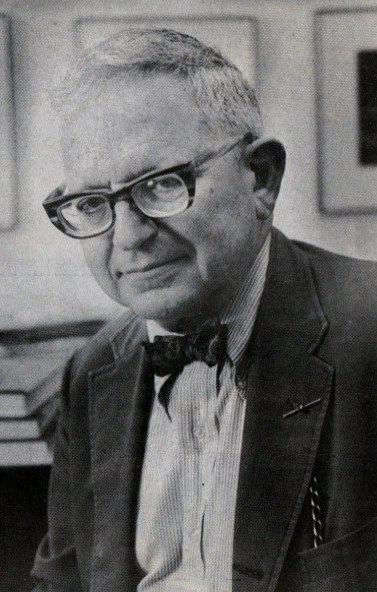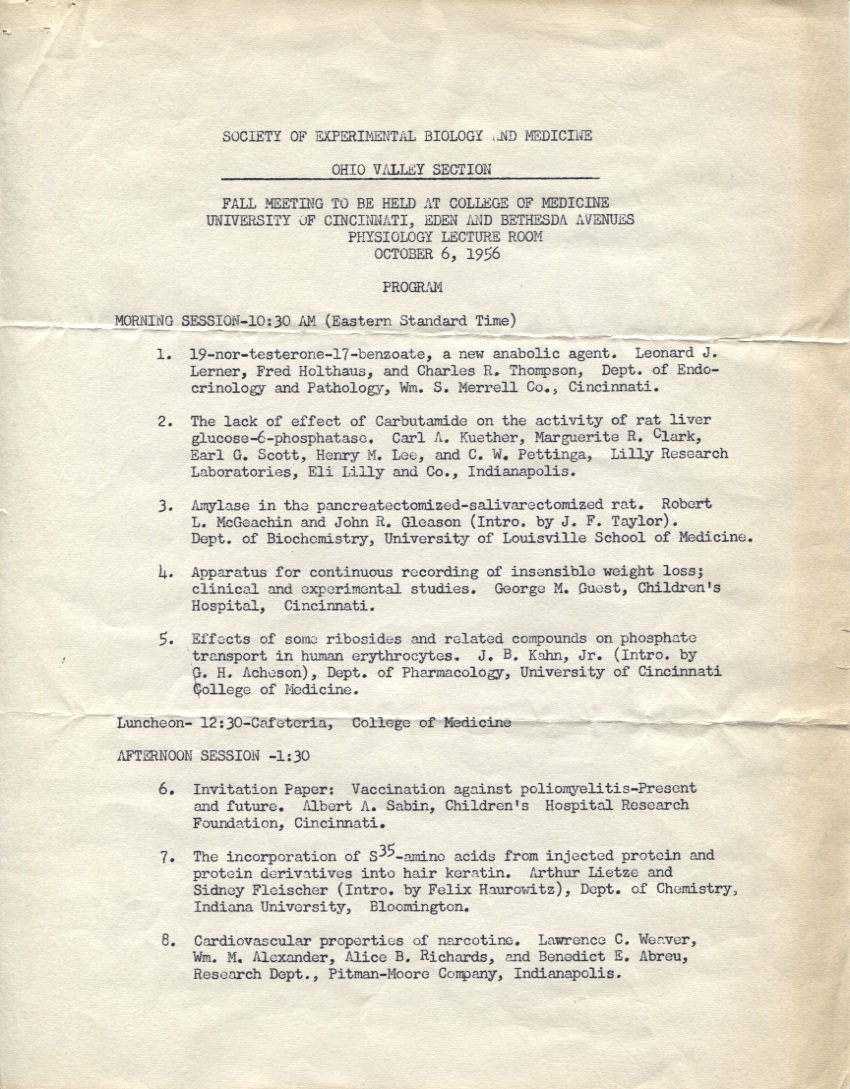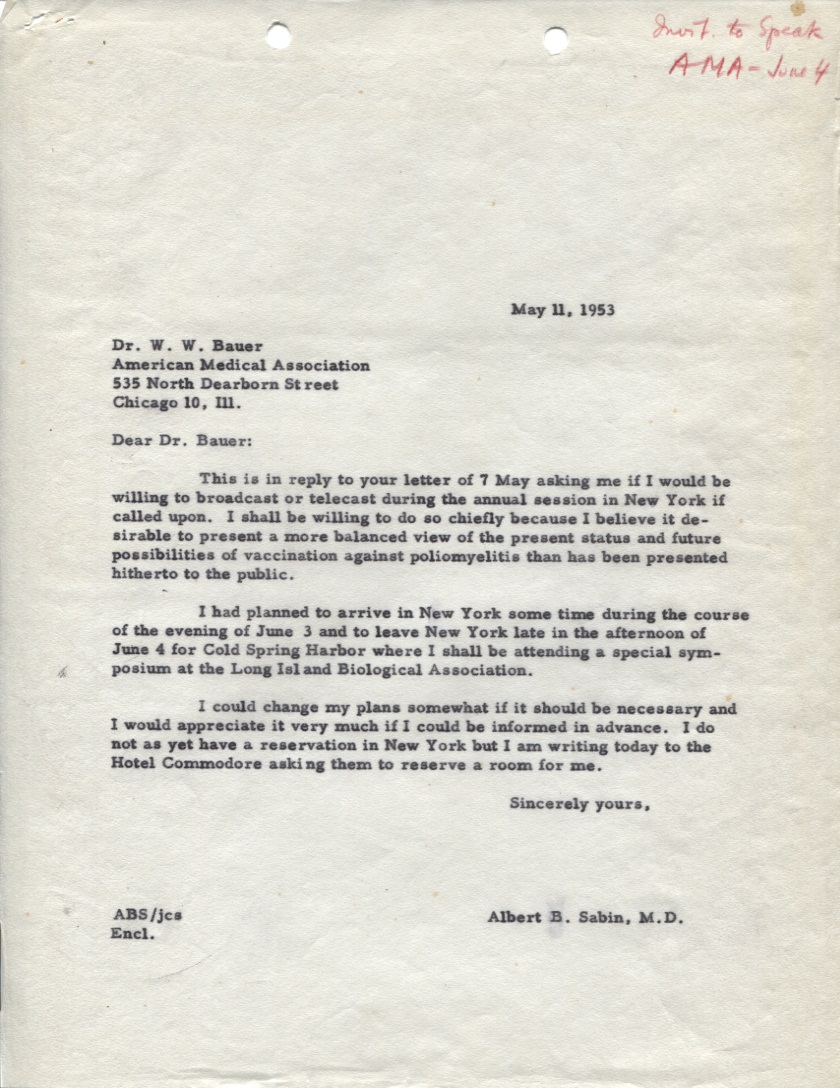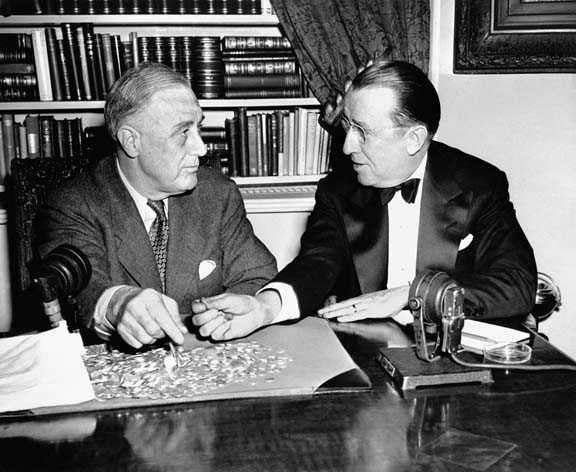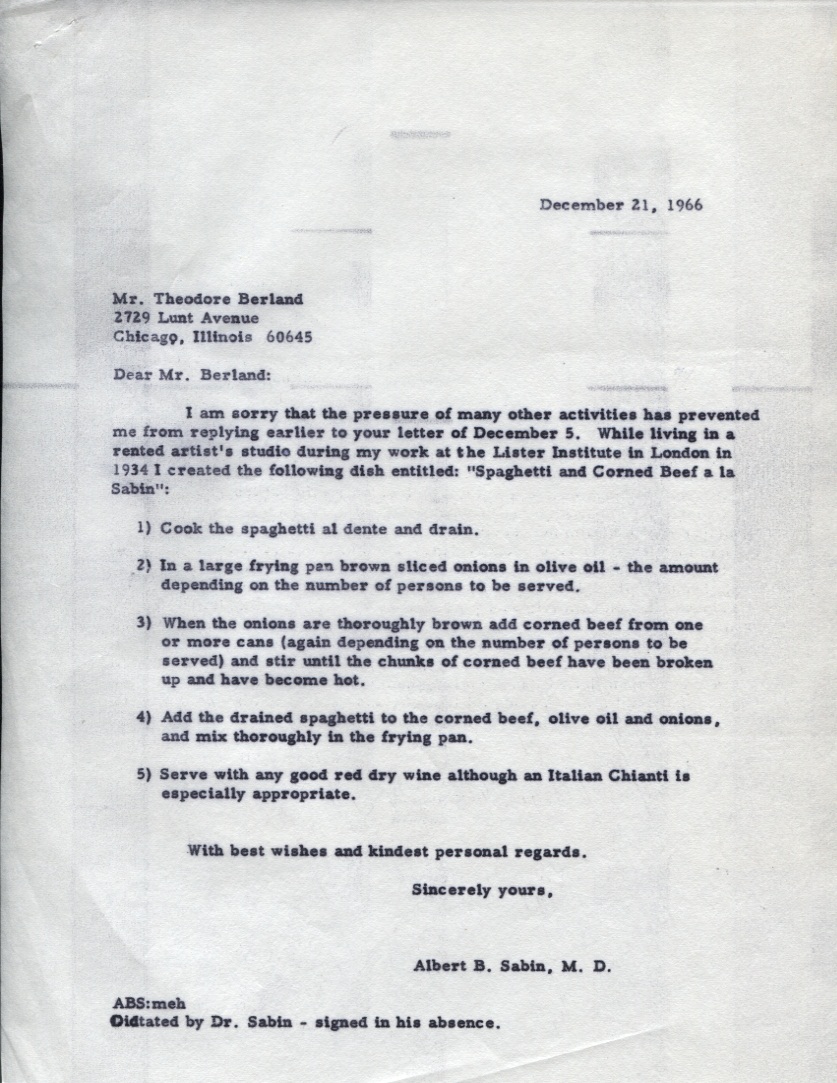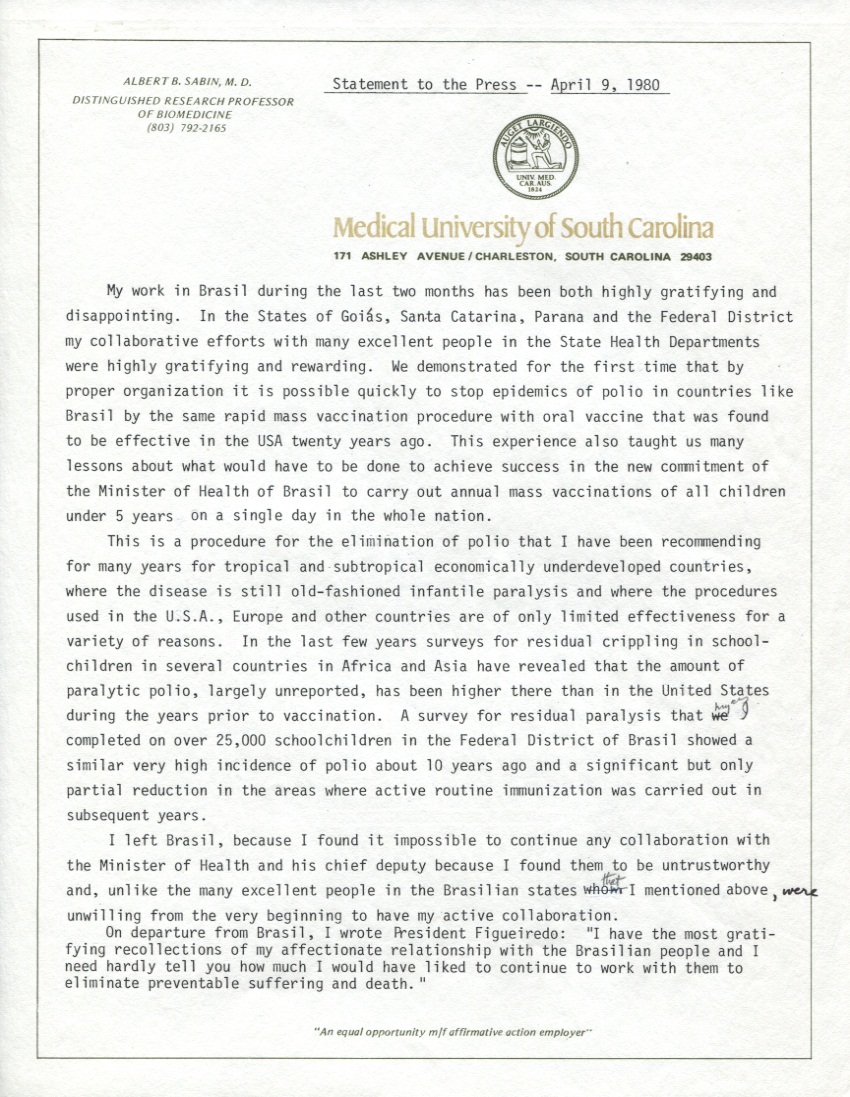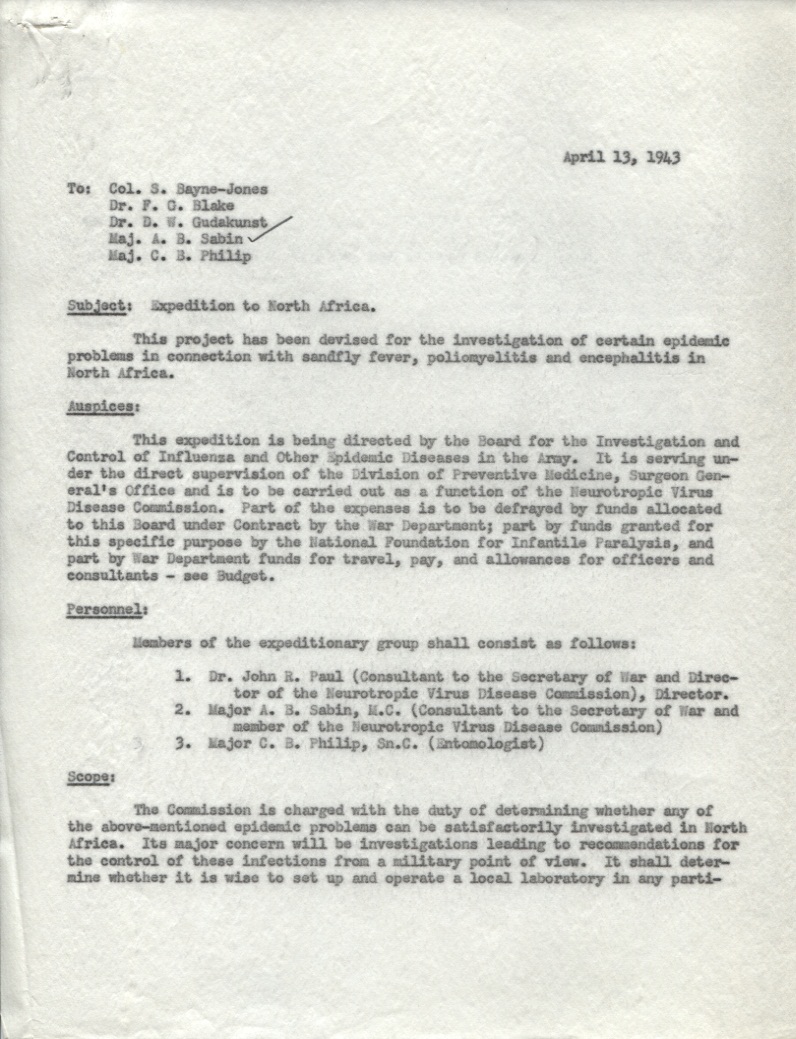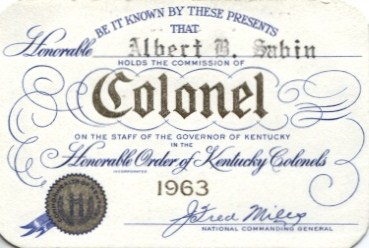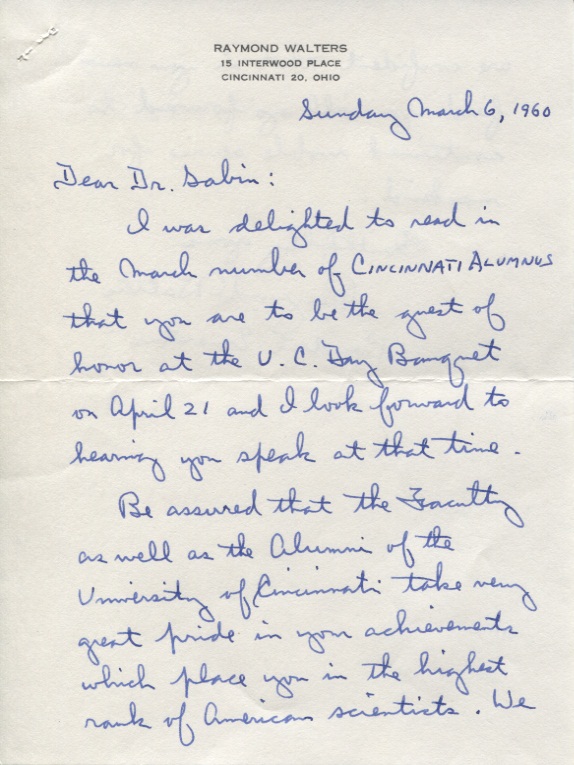Recently, I was reading a chapter on the history of polio research by Saul Benison, a former professor of history at the University of Cincinnati. Prior to coming to Cincinnati, Dr. Benison held a notable position as the historian for the National Foundation for Infantile Paralysis (see a previous blog about this organization). During this time, he wrote a memoir of virologist Thomas Rivers, which received much acclaim when it was published in 1967. While at Cincinnati, Dr. Benison worked extensively on a biography – really an oral history – about Dr. Sabin, but this book was never published.
Dr. Benison’s chapter on polio research began in 1907 with Dr. Simon Flexner and discussed over 50 years of poliomyelitis research. Of course, no history of this disease can be covered without discussing Dr. Sabin. In one part of the chapter, Benison recalled a 1956 conference sponsored by the National Foundation for Infantile Paralysis, which gathered scientists together to help Dr. Sabin in “choosing stable nonpathogenic virus strains” for the oral polio vaccine (p. 331-32). Dr. Benison wrote that the information that Dr. Sabin received from this conference allowed him to “successfully [adapt] Dr. Renato Dulbecco’s plaquing techniques for the selection of attenuated virus strains suitable” for the vaccine (p. 332). Continue reading

